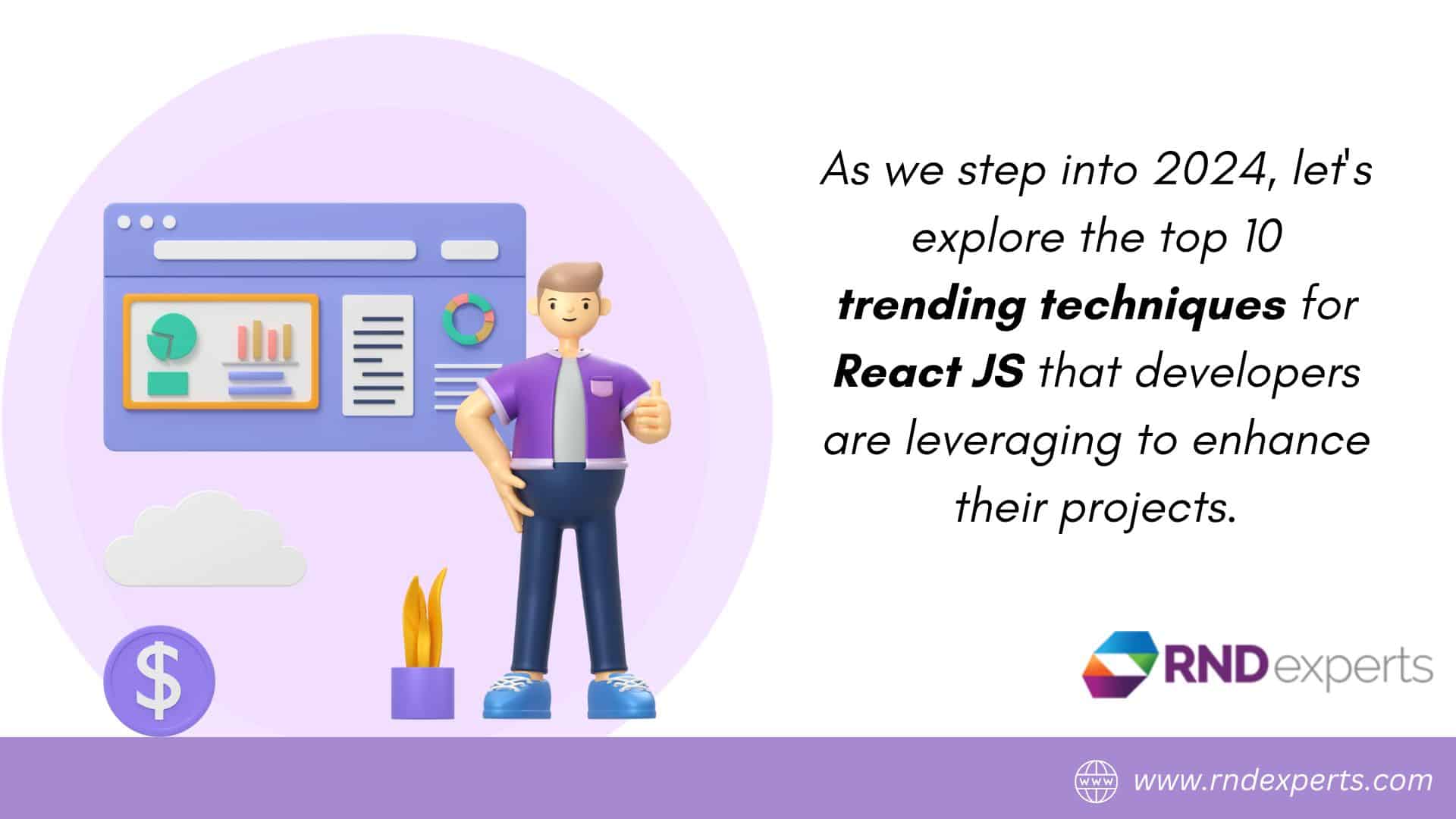In 2024, React JS continues to evolve, bringing forth a myriad of innovative techniques that redefine the landscape of web development.
Here’s a curated list of the top 10 trending techniques for React JS, showcasing the cutting-edge advancements shaping the way developers craft dynamic and efficient user interfaces:
1. Server-Side Rendering (SSR) and Next.js:
Server-side rendering has gained momentum for its ability to enhance performance and SEO optimization. Next.js, a React framework, has become a go-to choice for implementing SSR seamlessly. It provides a robust infrastructure for building server-rendered React applications with ease.
2. React JS Hooks for State Management :
React JS continue to revolutionize state management by offering a more concise and readable way to handle stateful logic in functional components. Hooks like useState and useEffect simplify complex state management patterns, making code more maintainable.
3. TypeScript Integration:
TypeScript’s static typing brings an added layer of reliability and scalability to React applications. More developers are adopting TypeScript for its ability to catch potential bugs during development, resulting in more robust and maintainable codebases.
4. GraphQL for Efficient API Queries:
GraphQL has gained popularity for its efficiency in fetching data by allowing clients to request only the specific information they need. Integrating GraphQL with React applications using libraries like Apollo Client has become a prevalent trend, streamlining data fetching and management.
5. Component-Level Code Splitting in React JS:
With the rising demand for faster page loads, component-level code splitting has become essential. Tools like React. lazy and Suspense allow developers to load specific components only when needed, reducing initial bundle size and improving overall performance.
6. State-of-the-Art Styling with CSS-in-JS Libraries:
Modern styling approaches like Styled Components and Emotion have gained traction for encapsulating styles within components. These libraries offer a more maintainable and modular way to manage styles in React applications, promoting a component-based styling paradigm.
7. JAMstack Architecture With React JS:
The JAMstack architecture (JavaScript, APIs, and Markup) has become a prevailing trend for building scalable and performant web applications. React JS, when combined with serverless functions and static site generators, allows developers to create fast and secure applications with a seamless developer experience.
8. React Js Testing Library for Robust Testing:
Ensuring the reliability of React applications is paramount, and the React Testing Library has become a go-to choice for testing React components. Its user-centric approach focuses on testing the application as users interact with it, resulting in more resilient and meaningful tests.
9. Micro Frontends for Scalable Architectures:
Micro Frontends, inspired by the microservices architecture, have gained attention for breaking down large monolithic React applications into smaller, more manageable parts. This approach enables teams to work independently on specific features, promoting scalability and maintainability.
10. PWA (Progressive Web App) Implementation:
Progressive Web Apps offer a native-like experience on the web, and React is at the forefront of PWA development. Integrating service workers, offline capabilities, and fast loading times have become standard practices for React JS developers aiming to create engaging and reliable web applications.
Conclusion:
Staying ahead in the dynamic world of React JS development requires a keen eye on emerging trends and adopting innovative techniques. Whether it’s optimizing performance, improving state management, or enhancing user experience, the top 10 trends outlined here are guiding developers toward building more robust, scalable, and efficient React applications in 2024. Embrace these trends, experiment with new tools, and elevate your React development skills to new heights.






